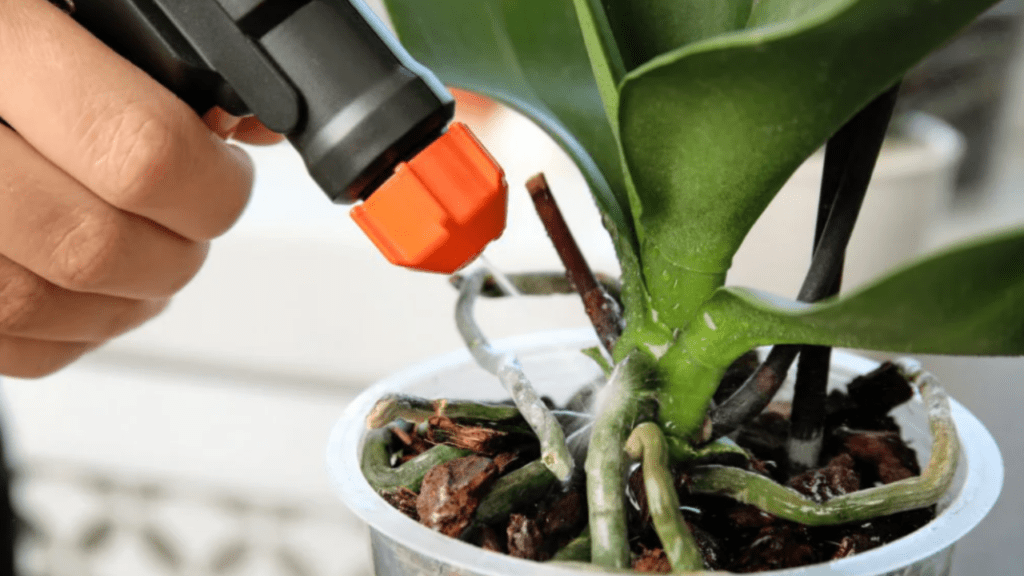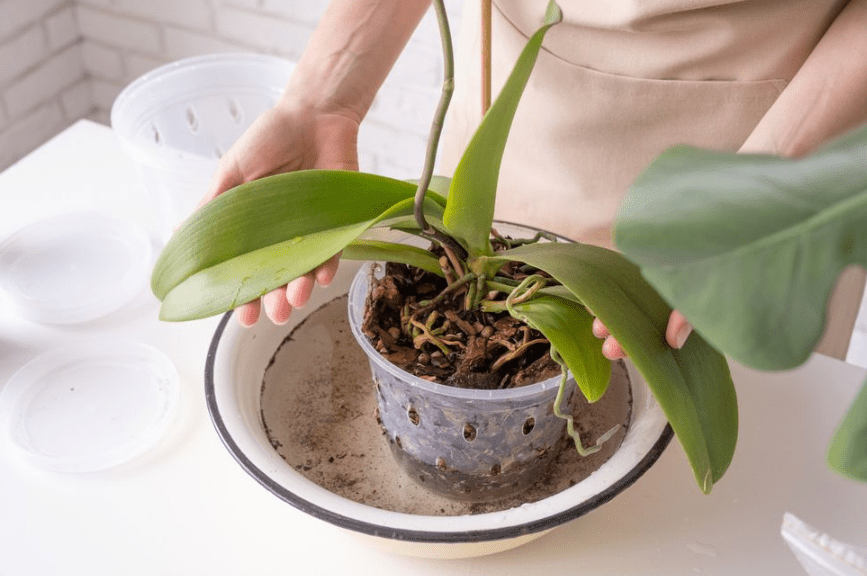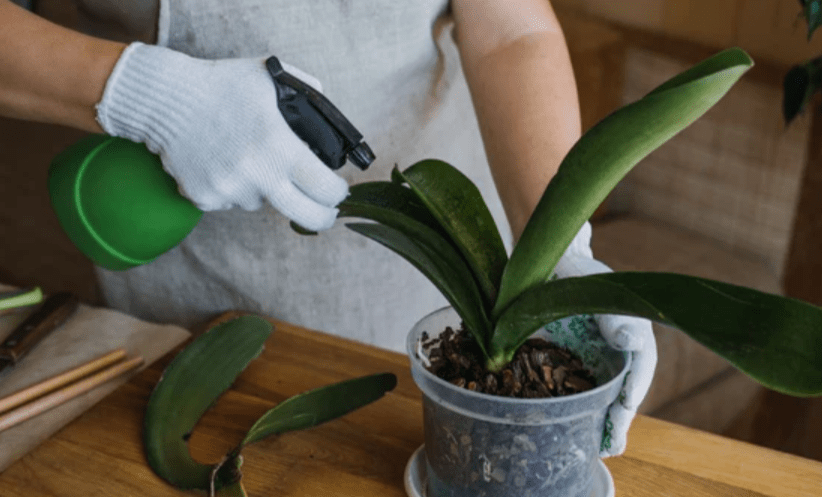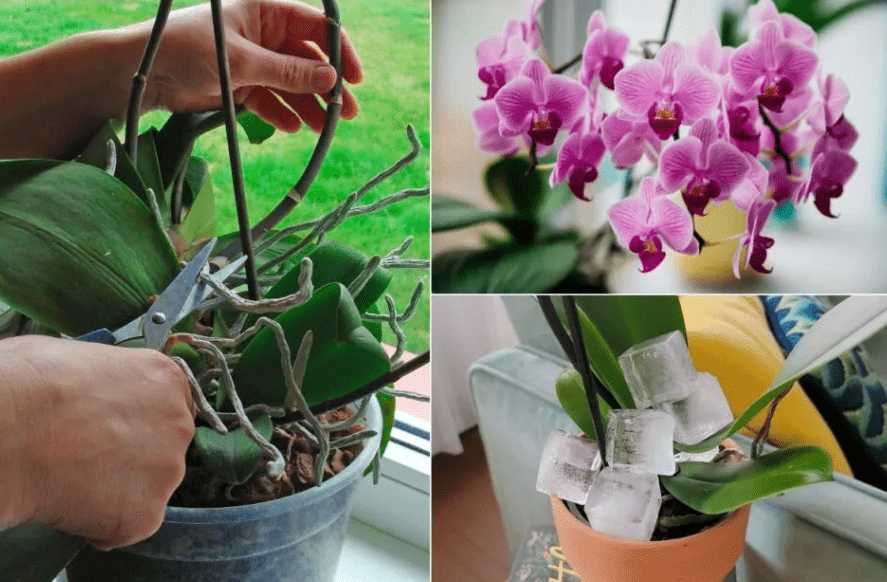
Ultimate Guide to Fertilization of Orchids: Tips for Healthy Blooms
Orchids are stunning and delicate flowers that require the right care and attention to thrive. Fertilization is a crucial aspect of orchid care, and with the right tips and techniques, you can ensure that your orchids produce healthy and vibrant blooms. Whether you’re new to orchid care or a seasoned enthusiast, this ultimate guide to fertilization of orchids will provide you with all the essential information you need to keep your orchids happy and blooming beautifully. So, let’s dive in and learn how to fertilize your orchids for stunning results!
Table of Contents
ToggleTypes of Fertilizers Suitable for Orchids
Choosing the Right Fertilizer for Orchids
Orchids require specific nutrients to thrive, and choosing the right fertilizer is essential for their growth and blooming. There are several types of fertilizers suitable for orchids, including balanced fertilizers, slow-release fertilizers, and organic fertilizers. Balanced fertilizers contain equal amounts of nitrogen, phosphorus, and potassium, which are essential for orchid growth. Slow-release fertilizers provide a steady supply of nutrients over time, while organic fertilizers are derived from natural sources and are gentle on orchids.
When choosing the right fertilizer for your orchids, it’s important to consider their specific needs and the stage of growth they are in. For example, during the active growing season, orchids may require a fertilizer with higher nitrogen content to promote leaf and stem growth. However, as they prepare to bloom, a fertilizer higher in phosphorus can encourage the development of healthy flowers.

It’s also important to consider the growing medium of your orchids when selecting a fertilizer. For orchids potted in bark or other organic materials, a fertilizer with a higher nitrogen content may be beneficial, as these materials tend to break down and deplete nutrients more quickly.
In addition to the type of fertilizer, it’s important to pay attention to the frequency and method of application. Diluting the fertilizer to half or quarter strength and applying it every 2-4 weeks during the active growing season can prevent the risk of overfeeding and burning the delicate roots of orchids.
By choosing the right fertilizer for your orchids and applying it at the appropriate times, you can provide them with the nutrients they need to produce healthy, vibrant blooms. With the proper care and attention, your orchids will flourish and bring beauty to your home for years to come.
Discuss the different types of fertilizers available (liquid, slow-release, organic, synthetic).
When it comes to fertilizing your plants, there are a variety of options to choose from. Liquid fertilizers are easy to apply and are quickly absorbed by the plants, making them a convenient choice for busy gardeners. Slow-release fertilizers provide a steady supply of nutrients over a longer period of time, reducing the need for frequent application. Organic fertilizers are derived from natural sources and promote soil health and microbial activity. On the other hand, synthetic fertilizers are manufactured and provide a quick boost of nutrients to the plants. Each type of fertilizer has its own benefits and drawbacks, so it’s important to consider your specific gardening needs before making a decision. Regardless of the type of fertilizer you choose, it’s important to follow the instructions for application to avoid overfeeding and damaging your plants. By selecting the right fertilizer and using it properly, you can ensure that your plants receive the nutrients they need to thrive and produce a beautiful display of flowers or fruits. So, take the time to understand the different types of fertilizers available and choose the best option for your garden. Your plants will thank you for it!
Highlight the importance of using a balanced fertilizer with the right N-P-K ratio.
When it comes to fertilizing your plants, it’s crucial to use a balanced fertilizer with the right N-P-K ratio. This ensures that your plants receive the essential nutrients they need to grow and thrive. A balanced fertilizer contains a mix of nitrogen, phosphorus, and potassium, which are vital for healthy plant growth. Each of these nutrients plays a specific role in plant development, and without the proper balance, your plants may not reach their full potential. Using the right N-P-K ratio in your fertilizer will give your plants the best chance to flourish and produce beautiful blooms or bountiful harvests. By taking the time to understand the importance of balanced fertilizers and using them in your garden, you are setting your plants up for success. Don’t underestimate the impact of the right fertilizer on your garden’s overall health and productivity. It’s worth the effort to invest in the best fertilizer for your specific gardening needs. Your plants will thank you with vibrant, healthy growth and a stunning display.
How and When to Fertilize Orchids
The Best Time to Fertilize Orchids
Fertilizing orchids is crucial for their health and growth. The best time to fertilize orchids is during their active growth period, which is typically from spring to early fall. This is when they are actively producing new leaves and roots, and they will greatly benefit from the extra nutrients in the fertilizer. Using a balanced fertilizer with the right N-P-K ratio will ensure that your orchids get the essential nutrients they need to thrive. It’s important to follow the instructions on the fertilizer package and dilute it to avoid over-fertilizing, which can be harmful to the plants. By fertilizing your orchids at the right time and with the right fertilizer, you are giving them the best chance to produce beautiful blooms and stay healthy. Don’t miss out on this important step in caring for your orchids – they will thank you with stunning, vibrant growth!

Explain the seasonal fertilization schedule—what time of year is best for fertilizing orchids.
Fertilizing orchids is crucial for their health and growth, and the best time to fertilize orchids is during their active growth period, which is typically from spring to early fall. This is when they are actively producing new leaves and roots, and they will greatly benefit from the extra nutrients in the fertilizer. Using a balanced fertilizer with the right N-P-K ratio will ensure that your orchids get the essential nutrients they need to thrive. It’s important to follow the instructions on the fertilizer package and dilute it to avoid over-fertilizing, which can be harmful to the plants. By fertilizing your orchids at the right time and with the right fertilizer, you are giving them the best chance to produce beautiful blooms and stay healthy. Don’t miss out on this important step in caring for your orchids – they will thank you with stunning, vibrant growth!
The Proper Technique for Fertilizing Orchids
Fertilizing orchids is crucial for their health and growth, and the best time to fertilize orchids is during their active growth period, which is typically from spring to early fall. This is when they are actively producing new leaves and roots, and they will greatly benefit from the extra nutrients in the fertilizer. Using a balanced fertilizer with the right N-P-K ratio will ensure that your orchids get the essential nutrients they need to thrive. It’s important to follow the instructions on the fertilizer package and dilute it to avoid over-fertilizing, which can be harmful to the plants. By fertilizing your orchids at the right time and with the right fertilizer, you are giving them the best chance to produce beautiful blooms and stay healthy. Don’t miss out on this important step in caring for your orchids – they will thank you with stunning, vibrant growth! Let’s all commit to providing our orchids with the care and attention they deserve. Their beauty and health are worth it.
Provide step-by-step instructions on how to fertilize orchids.
Step 1: Choose a balanced fertilizer with the right N-P-K ratio for orchids. Look for a fertilizer that has equal amounts of nitrogen, phosphorus, and potassium to ensure your orchids get the nutrients they need to thrive.
Step 2: Dilute the fertilizer according to the instructions on the package. Over-fertilizing can be harmful to orchids, so it’s important to follow the recommended dilution ratio to avoid damaging the plants.
Step 3: Fertilize your orchids when they are actively growing, typically during the spring and summer months. This is when they are producing new leaves and roots and will benefit the most from the extra nutrients in the fertilizer.
Step 4: Apply the diluted fertilizer to the orchids’ growing medium, making sure to thoroughly water the plants afterwards to help the fertilizer soak into the soil and reach the roots.
Step 5: Monitor the health and growth of your orchids after fertilizing. If you notice any signs of over-fertilization, such as yellowing or wilting leaves, stop fertilizing and flush the soil with water to remove excess nutrients.
By following these step-by-step instructions, you can provide your orchids with the essential nutrients they need to produce beautiful blooms and stay healthy. Don’t overlook the importance of fertilizing your orchids – it’s a crucial step in caring for these stunning plants. Let’s all commit to giving our orchids the best care possible and enjoy the vibrant, flourishing growth they provide in return.
Discuss the importance of diluting fertilizers to avoid root burn.
It is crucial to dilute fertilizers before applying them to your orchids in order to avoid root burn. Orchids are delicate plants and too much fertilizer can cause harm to their roots and leaves. Diluting the fertilizer ensures that the plants receive the necessary nutrients without causing damage. When applying the diluted fertilizer to the growing medium, it is important to thoroughly water the plants afterwards to help the fertilizer soak into the soil and reach the roots. Monitoring the health and growth of your orchids after fertilizing is also essential. If you notice any signs of over-fertilization, such as yellowing or wilting leaves, it is important to stop fertilizing and flush the soil with water to remove excess nutrients. By taking these steps and providing your orchids with the essential nutrients they need, you can help them produce beautiful blooms and stay healthy. Let’s all commit to giving our orchids the best care possible and enjoy the vibrant, flourishing growth they provide in return.
Mention the impact of water quality on fertilization (e.g., using distilled water).
Orchids are delicate plants and they require the right balance of nutrients to thrive. Using distilled water for fertilization can have a significant impact on the health of your orchids. Distilled water is free from impurities and chemicals that can interfere with the absorption of nutrients by the plant. When you use distilled water for fertilization, you can ensure that your orchids are getting the essential nutrients they need without any harmful substances that can damage their roots and leaves. This will help your orchids to grow healthy and strong, and produce beautiful blooms. By using distilled water for fertilization, you can give your orchids the best chance at flourishing and enjoy the vibrant, thriving growth they provide in return. Let’s all make the commitment to give our orchids the best care possible and watch them thrive in return.
Common Mistakes in Orchid Fertilization
Avoid These Fertilization Pitfalls
When it comes to fertilizing your orchids, there are some common pitfalls that you should avoid. First and foremost, make sure not to over-fertilize your orchids. Too much fertilizer can cause salt build-up in the potting medium, which can harm the roots of your orchid. Additionally, using tap water for fertilization can also be detrimental to your orchid’s health. Tap water contains chlorine and other chemicals that can damage the delicate roots of your orchid. Instead, opt for distilled water to ensure that your orchid receives the purest and cleanest form of water for fertilization. Another mistake to avoid is using the wrong type of fertilizer. Orchids require a specific balance of nutrients, so be sure to use a fertilizer that is specifically formulated for orchids. Lastly, be mindful of the timing of fertilization. Fertilize your orchids during their active growing season and reduce or stop fertilization during their resting period. By avoiding these fertilization pitfalls, you can ensure that your orchids receive the proper care and nutrition they need to thrive and bloom beautifully. Let’s all make the commitment to give our orchids the best care possible and watch them flourish in return.

Discuss over-fertilization and its symptoms (e.g., root burn, leaf damage).
Over-fertilization can be detrimental to the health of your orchids. It can lead to root burn and leaf damage, which can ultimately harm the overall health and beauty of your orchids. To avoid this, it’s important to be mindful of the type and amount of fertilizer you use. Instead, opt for distilled water to ensure that your orchid receives the purest and cleanest form of water for fertilization. Another mistake to avoid is using the wrong type of fertilizer. Orchids require a specific balance of nutrients, so be sure to use a fertilizer that is specifically formulated for orchids. Lastly, be mindful of the timing of fertilization. Fertilize your orchids during their active growing season and reduce or stop fertilization during their resting period. By avoiding these fertilization pitfalls, you can ensure that your orchids receive the proper care and nutrition they need to thrive and bloom beautifully. Let’s all make the commitment to give our orchids the best care possible and watch them flourish in return.
Explain the dangers of under-fertilization and nutrient deficiencies.
Under-fertilization and nutrient deficiencies can have detrimental effects on your orchids. Without the proper nutrients, your orchids may not be able to grow and bloom as they should. This can lead to stunted growth, yellowing leaves, and a lack of flowers. To ensure that your orchids receive the nutrients they need, it’s important to use the right type of fertilizer and to fertilize during their active growing season. Using the wrong type of fertilizer or fertilizing at the wrong time can lead to nutrient deficiencies and under-fertilization. Distilled water is also crucial to ensure that your orchids receive the purest and cleanest form of water for fertilization. By avoiding these pitfalls, you can ensure that your orchids receive the proper care and nutrition they need to thrive and bloom beautifully. Let’s all make the commitment to give our orchids the best care possible and watch them flourish in return.
Provide solutions to common problems (e.g., flushing the potting medium to remove excess salts).
It’s important to provide the right nutrients for your orchids so that they can thrive and bloom beautifully. One common problem that orchid growers face is the buildup of excess salts in the potting medium, which can lead to stunted growth and yellowing leaves. To solve this problem, it’s important to flush the potting medium with distilled water to remove the excess salts. This will ensure that your orchids receive the proper nutrients they need to grow and bloom. Additionally, using the right type of fertilizer and fertilizing during their active growing season is crucial for the health of your orchids. By providing the right care and nutrition, you can prevent common problems and help your orchids thrive. Let’s all make the commitment to give our orchids the best care possible and watch them flourish in return.
Organic vs. Synthetic Fertilizers: What’s Best for Orchids?
Comparing Organic and Synthetic Options
When it comes to caring for your plants, choosing the right fertilizer is crucial. Organic fertilizers are derived from natural sources and provide a slow release of nutrients to your plants. They are environmentally friendly and promote soil health. On the other hand, synthetic fertilizers are made from chemical compounds and provide a quick release of nutrients. While they may initially produce faster results, they can also lead to soil and water pollution.
It’s important to consider the specific needs of your orchids when choosing between organic and synthetic fertilizers. Organic fertilizers can improve soil structure and microbial activity, which benefits the long-term health of your plants. They also provide a more balanced and slow release of nutrients, promoting steady growth and blooming.
Synthetic fertilizers, on the other hand, can deliver specific nutrients in precise amounts, which can be beneficial for addressing specific deficiencies in your orchids. However, they can also build up salts in the soil over time, leading to nutrient imbalances and impacting the overall health of your plants.
Ultimately, the choice between organic and synthetic fertilizers comes down to your personal preferences and the specific needs of your orchids. Both options have their advantages and disadvantages, so it’s important to weigh them carefully before making a decision. Consider the long-term health of your plants and the environmental impact of your choice. With the right care and attention, your orchids can thrive with either type of fertilizer.
Discuss the pros and cons of using organic fertilizers for orchids.
When it comes to using organic fertilizers for orchids, there are definitely some pros and cons to consider. One of the main advantages of organic fertilizers is that they are derived from natural sources, making them safer for the environment and potentially healthier for your plants. They also provide a more balanced and slow release of nutrients, promoting steady growth and blooming. On the other hand, synthetic fertilizers can deliver specific nutrients in precise amounts, which can be beneficial for addressing specific deficiencies in your orchids. However, they can also build up salts in the soil over time, leading to nutrient imbalances and impacting the overall health of your plants. Ultimately, the choice between organic and synthetic fertilizers comes down to your personal preferences and the specific needs of your orchids. Both options have their advantages and disadvantages, so it’s important to weigh them carefully before making a decision. Consider the long-term health of your plants and the environmental impact of your choice. With the right care and attention, your orchids can thrive with either type of fertilizer.
Compare the benefits of synthetic fertilizers.
When it comes to fertilizing your orchids, synthetic fertilizers offer a range of benefits. They provide a more balanced and slow release of nutrients, promoting steady growth and blooming. Additionally, synthetic fertilizers can deliver specific nutrients in precise amounts, which can be beneficial for addressing specific deficiencies in your orchids. However, it’s important to be cautious with synthetic fertilizers as they can build up salts in the soil over time, leading to nutrient imbalances and impacting the overall health of your plants. On the other hand, organic fertilizers offer a more natural and environmentally friendly option. They can improve the overall soil structure and help to support the growth of beneficial microorganisms. Ultimately, the choice between organic and synthetic fertilizers comes down to your personal preferences and the specific needs of your orchids. Both options have their advantages and disadvantages, so it’s important to weigh them carefully before making a decision. Consider the long-term health of your plants and the environmental impact of your choice. With the right care and attention, your orchids can thrive with either type of fertilizer.
In conclusion, fertilizing orchids is an essential part of orchid care, and with the right techniques and tips, you can ensure that your orchids produce healthy and vibrant blooms. By following the advice in this guide, you can become a successful orchid grower and enjoy the beauty of these stunning flowers for years to come. Don’t miss out on the opportunity to elevate your orchid care skills and create a thriving environment for your orchids. Check out this ultimate guide to fertilization of orchids and take your orchid care to the next level!
Frequently asked questions And Answer
The best time to fertilize orchids is during their active growing season, which is typically in the spring and summer months. This is when they need the most nutrients to support healthy growth and blooming.
It is important to use a fertilizer specifically formulated for orchids, as they have unique nutrient needs. Look for a balanced fertilizer with a higher nitrogen content to support leaf and stem growth, as well as a lower phosphorus content to promote blooming.
It is generally recommended to fertilize orchids every 2-4 weeks during their active growing season. Be sure to follow the instructions on the fertilizer package for specific guidelines on application frequency.
Yes, over-fertilizing can be detrimental to orchids. Too much fertilizer can cause salt build-up in the growing medium, leading to root damage and nutrient imbalances. Always follow the recommended dosage and avoid applying fertilizer to dry or dehydrated plants.
Yes, there are organic fertilizers specifically designed for orchids that can provide the necessary nutrients without the use of synthetic chemicals. Look for organic orchid fertilizers that contain beneficial microorganisms and natural ingredients.
It is best to reduce or eliminate fertilization during the dormant period of orchids, typically in the fall and winter. This allows the plants to rest and prepare for their next growth cycle.
While many orchids have similar nutrient requirements, it is important to consider the specific needs of different orchid species. Some orchids may benefit from a slightly different fertilizer formulation, so it is recommended to research the specific requirements of your orchid variety.
In addition to fertilization, it is important to ensure that your orchids are receiving adequate light, water, and proper air circulation. These factors, combined with a balanced fertilization regimen, will contribute to healthy and vibrant orchid blooms.
